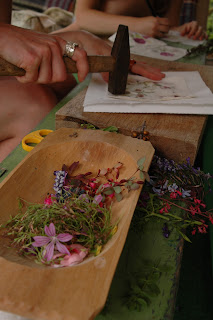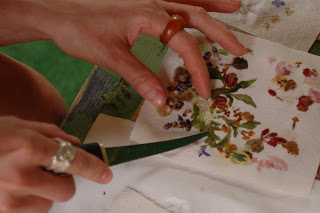How knowledgeable are shoppers about what they are buying?
We've been asked to do three interviews in a chosen topic. I choose the one above and I started with a mind map before I found out my questions. I've tried to consider different topics relevant to the question. I won't use the real names of my interviewees because they didn't give me a permission to do so. I choose 3 girls because as far as I know boys not that interested in shopping trips. They try to buy the items they're looking for as quick as possible while girls do shopping as a hobby or a recreational amusement.
First I talked with an architecture girl in her early 30's, her name is Petra.
1. Where do you usually buy your clothes, shoes, etc.?
I lost my job because of the recession so nowadays I mostly go to charity shops, I search for High Street sales and TK Maxx is my constant favourite.
2. How many times do you go for a shopping trip per a month?
I go for window shopping about twice a month but I don't buy anything if I don't need it. Mainly because I don't have the money for it. But I still buy a new item in every month.
3. What do you consider when you buy something?
I would go for colourful, extreme items, maybe with big patterns. Those are the ones which catch my eyes.
4. How do you make decisions during shopping?
Value for money. I wouldn't buy something just because it's organic. I used to buy organic T-shirts though when I had enough money.
5. What influences your taste?
I think the biggest influence was the Art College in Hungary. I still have the same style although it became more sophisticated and a little bit more mature. I always want to be different, that's the main rule.
6. Do you know where the products you buy coming from?
Since I found out where Primark products coming from I buy less items there. But probably almost every clothes made in Asia (China or India) by wee children. TK Maxx is good though, they sell quality products for reasonable prices. I don't think we can find out where clothes coming from or at least it's really hard to bring to light. I've read an article on Tree Hugger about organic clothes. They discovered that a big percentages of them aren't really organic, although the labels told so.
7. Quality or quantity?
Both. I think I spent as much money at Primark for cheap stuff in the last couple years as I spent on quality stuff. Not any more though. I realised that they last for 2-3 washes then they are rubbish. And I don't want to produce more waste. TK Maxx is the best place to go, it offers cheap, quality products and it has a similar feeling than a charity shop what I really enjoy.
So you don't go to Primark anymore?
Well, sometimes I do, but I don't buy lots of stuff just because they're cheap.
Petra is fairly aware of sustainable issues although she still goes to Primark sometimes. It's hard to resist of cheap clothes and customers usually hope that this time it's going to live longer than last time. Sometimes actually Primark goods do live for years but you have to be extremely lucky. Price is a very important issue for her at the moment because she doesn't have the money to buy costly products. I'm not sure if it's been always the same. That's a shame that I forgot to ask her. She enjoys shopping and likes to present herself with something new every month but she's not a shopping freak. She has her own style and she's fairly unaffected by trends and by her environment. She probably checks the Tree Hugger website regularly so she must be interested in eco-friendly solutions. I think if she would have the money she would go for quality, sustainable maybe even fair trade clothing but price still would be essential. Although if she falls in love with something unique, extreme and colourful item I'm sure she would pay quite a lot of money for it when she'll get a new job. It's value for money after all.
My next interviewee was Eva in her mid 20's. She's working as a shop assistant in a book store.
1. Where do you usually buy clothes, shoes, etc.?
I go where the big sales are. To the high street or to the shopping centres. Sometimes I go to outlets but they are pretty far away.
2. How many times do you go for a shopping trip per a month?
I go for window shopping about 6 times but when I actually buy something is about twice a month.
3. What do you consider when you buy something?
…
What are you looking for when you go for a shopping trip?
T-shirts, jumpers and shoes.
What catches your eyes?
The colours or the shape of the clothes.
Which colours do you prefer?
In terms of T-shirts I prefer black or white because they are perfect to wear at work. Vests can be colourful though, I can't wear them at work anyway. I prefer green, blue or grey. I don't like pattern so I go for the plain ones.
4. How do you make decisions during shopping?
I fall in love at the first blush. I would pay more for something if it perfectly fits or if that's the item I was looking for. If it makes my shape looking nicer that's a must buy. Or if it's very cheap even if I won't use it just as a pyjama. I guess this is why I have a huge cupboard full of clothes and I never find anything to wear.
5. What influences your taste?
My environment, my workplace, what I allowed to wear at work and also my age.
Your age?
Yes, I dress more elegant than before. I try to wear clothes appropriate for my age. But fashion must influences me as well because shops have a narrow supply according to current trends.
6. Do you know where the products you buy coming from?
No, it doesn't really matter for me.
What about the materials?
That's very important. I only buy 100% cotton. It doesn't make me sweat and comfortable as well.
8. Quality or quantity?
Quantity. I rather have many clothes and store them in the cupboard.
Eva is very aware of her look and her main goal is to fit in to the society. I don't think she has an interesting wardrobe probably it's full with similar coloured plain T-shirts and jumpers. She cares much more about what she's wearing - even for sleeping – that where the products come from. She's not interested is sustainability or in global issues. Price is the most important criteria for her probably because she doesn't have enough money for shopping. She goes for window shopping quite often though so probably she would buy more stuff if she could afford it, maybe even another cupboard to store the new findings. I think she's a little bit addicted to shopping otherwise she wouldn't buy useless cheap stuff just to own it.
My next girl is Gigi also in her mid 20's. She works as a shop assistant at a petrol station.
1. Where do you usually buy clothes, shoes, etc.?
I'm looking for high street sales or I go to shopping centres because they sell quality products for cheap and they come in all sizes.
2. How many times do you go for a shopping trip per a month?
5-6 times for window shopping and 2-3 times for actual shopping, when I need something.
3. What do you consider when you buy something?
I buy something when I find myself in the object, when I feel like its my own. Of course I check the prize tag first.
How would you describe an item like this?
Style, material and the right size are very important. I like feminine clothes in pastel colours, black or white. I always have a crazy hairstyle so I try to balance it with my clothes. I like soft cotton materials because they are comfortable and healthy. I also care about the quality of the item.
4. How do you make decisions during shopping?
I just fall in love at first sight.
5. What influences your taste?
My environment, my family and the style of the music I like at that moment. For example I wouldn't ever bought a pair of Air Max shoes if wouldn't go to hardcore parties at that time. Everybody was wearing them so I tried to fit in.
6. Do you know where the products you buy coming from?
No, I don't check it normally, everything is coming from China anyway. Although I would never buy Nike shoes if the label says 'Made in Taiwan'. It means that's a fake one because Nike doesn't fabricate shoes in Taiwan. In any other case I don't care the origin. I think it doesn't affect the quality.
Do you check what the product made of?
Yes, but I can feel it. I love touching fabrics. I wouldn't buy anything prickly, soft feeling is very essential for me.
7. Quality or quantity?
I like to buy more. It is important for me to have a wide range of clothes in cupboard but I wouldn't buy anything cheap to bin it after two washes. Quality is important.
Further research:
Petra, my first interviewee mentioned a website called Tree Hugger and the problem of some companies faking organic clothing. So I tried to find the post about this topic but I couldn't. I found some other ones though.
An interesting finding from Michael Lackman of Lotus Organics concludes, “The growing of bamboo is environmentally friendly but the manufacturing of bamboo into fabric raises environmental and health concerns because of the strong chemical solvents used to cook the bamboo plant into a viscose solution that is then reconstructed into cellulose fiber for weaving into yarn for fabric.”
This interesting article compares eco-friendly attributes of cotton, nylon, fake- and real fur coats. It talks about the accomplishment of organic cotton and how big companies trying to adopt it to their supply. It also mentions innovative fabric types as a solution for sustainability even a sweatshirt developed by Rebecca Earley (Craft Council) which never has to be washed. It's a big success story because 80 per cent of a garment's energy use is in its laundering.
















